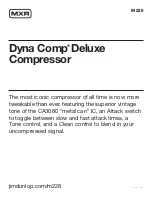
10.0 MAINTENANCE
IRN37–160K–OF & IRN50–200H–OF
http://air.irco.com
78
Start the compressor and check the oil filter and oil
drain valve for leaks. Select ”BEARING OIL PRESS”
from the current status screen to insure that adequate
oil pressure has been attained. Inspect the gearcase
sight glass, the correct oil level for the sump during
operation is
3
/
4
to
4
/
4
full. Some amount of foaming in
the sight glass is normal. The oil level is interpreted as
the level in the sight glass below the top foam, where a
line of separation can be seen. If additional oil is
required, stop the compressor and add oil as needed.
Tools required
Wide–blade screwdriver or M10 wrench or M10 socket
with ratchet
400mm adjustable wrench
600mm adjustable wrench
Oil filter wrench
Parts required
Oil filter element
Approximately 64 litre (17 U.S. gal) of Ultra Coolant for
N90–160K, N125–200H
Approximately 53 litre (14 U.S. gal) of Ultra Coolant for
N55–75K, N75,100H
Approximately 53 litre (14 U.S. gal) of Ultra Coolant for
N37–45K, N50–60H
Pressure system
At 2000 hour intervals, inspect the external surfaces of
the airends and piping, including all fittings, for visible
signs of impact damage, excessive corrosion and
abrasions. Any suspect parts should be replaced
before the compressor is put back into service.
Gearcase breather
To service the gearcase breather, remove the
appropriate panel. Remove the breather cover by
unscrewing the four retaining screws. Remove all of the
breather media and clean with a suitable solvent. Allow
the media to dry. Re–install the media, the cover, and
the enclosure panel.
Condensate drain functionality
To verify the functionality of the condensate drains,
simply observe the timed operation of each. Each drain
should open at least every 3 minutes while the
compressor is loaded. (The intercooler drain exhausts
at a much lower pressure than the aftercooler).
Oil free condensate can be disposed of via a sewer
drain.
Condensate strainers
In order to service the condensate strainers (both
interstage and discharge), the strainer service valves
preceding the strainers should be closed. Remove the
screens from the strainers, while noting the direction.
Clean any debris from the screens and reinstall. Open
the strainer service valves.
Blower motor Re–Grease
(N75–160 Aircooled units)
6 Months or 4000 Hrs.
Apply high melting point grease into the blower motor
bearings using a grease gun at the nipple provided.
Stop when excess grease is seen at the relief port.
Oil hoses
S
The flexible hoses that carry oil through the cooling
system may become brittle with age and will require
replacement. Have your local Ingersoll–Rand
Distributor or Air Center inspect them every 3 months
and replace them as needed or every 2 years.
S
Depending on the location of the hose, it may
contain
compressor oil. It is recommended to drain the oil into
a clean container. Cover the container to prevent
contamination. If the oil is contaminated, a new charge
of oil must be used
S
Remove the hose.
S
Install the new hose and refill the unit with oil. Start
the compressor, check for leaks and check coolant
level. Refill as necessary.
S
Replace the oil fill plug and tighten
Pressure relief valve check
The pressure relief valve must be frequently tested and
regularly maintained. Remove from the machine and
check for the correct operating pressure. Correct,
replace as necessary. If operating conditions are
particularly severe, the frequency of testing and
maintenance must be increased accordingly. A
pressure relief valve check must also be performed at
the end of any non–service period. The user must
establish the frequency of such tests as it is influenced
by such factors as the severity of the operating
environment.
CAUTION
High pressure air will discharge through the
discharge ports of the valve during pressure relief
valve check. Wear ample clothing, gloves, safety
glasses and ear protection during valve testing.
Run the compressor for about 10 minutes by venting air
from the system to let the unit warm up. With the unit
running, test at or near the maximum operating
pressure by opening the valve for the minimum period
required to flush the valve seat free of debris. This can
be accomplished by holding the test lever fully open or
unscrewing the spring pressure retaining cap,
depending on the type of valve installed. If there is no
evidence of discharge or the valve does not fully close,
discontinue use of equipment and contact a licensed
contractor or qualified service personnel.
The pressure relief valve should also be tested and
re–calibrated in accordance with any national or local
codes that may exist.
If no code exists, IR recommend
that the pressure relief valve is recalibrated at intervals
of one year.













































